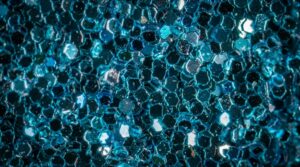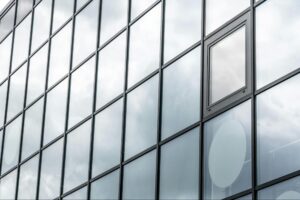Blackout window film offers a practical solution for controlling light and privacy in your home or office. By effectively blocking out external light, this type of film creates a darkened environment that is ideal for bedrooms, media rooms, and spaces where privacy is desired. However, many people are curious about whether it is possible to see through blackout window film. In this article, we will explore the functionality and limitations of blackout window film to answer the question: Can you see through blackout window film?
Understanding Blackout Window Film
What is Blackout Window Film?
Blackout window film is a specialized type of window treatment that is designed to completely block out light from entering a room. It is typically made of a vinyl material that is applied directly to the window glass. The film is available in different thicknesses and opacities, allowing users to choose the level of darkness and privacy they desire.
One of the key benefits of blackout window film is its ability to not only block out light but also provide insulation for the window. The film can help regulate the temperature in a room by reducing heat transfer through the glass, making it an energy-efficient option for homes and offices.
How Does Blackout Window Film Work?
Blackout window film works by utilizing a combination of light absorption and reflection. The film is manufactured with light-blocking pigments that absorb incoming light, preventing it from passing through the glass. Additionally, the film has a reflective coating that sends the absorbed light back toward the exterior, further enhancing its light-blocking capabilities.
Moreover, blackout window film is also effective in reducing glare from the sun, making it ideal for rooms with televisions or computer screens. The film can help improve visibility by minimizing the harsh glare that can be distracting and uncomfortable. Its UV-blocking properties also protect furniture and flooring from fading due to sun exposure, extending the lifespan of interior decor.
The Science Behind Blackout Window Film
Light Transmission and Reflection
When light hits blackout window film, it is either absorbed or reflected. The darkness of the film determines its light-absorbing capacity, with darker films absorbing more light. The thickness of the film also plays a role in its light-blocking abilities, as thicker films have more layers of light-blocking materials.
Furthermore, the reflective coating on the film helps redirect light away from the interior of the room. This is particularly useful during the daytime when external light sources are brighter. The combination of light absorption and reflection helps create a blackout effect, making it difficult to see inside or outside the room.
Blackout window film is not only effective in blocking light but also offers additional benefits. It can help regulate room temperature by reducing heat gain from sunlight, leading to energy savings on cooling costs. Additionally, some films are designed to block harmful UV rays, protecting furniture and flooring from fading.
Material and Thickness Impact
The material and thickness of blackout window film can have a significant impact on its light-blocking capabilities. Films made of high-quality vinyl are generally more effective at blocking light compared to lower-quality alternatives. Thicker films also provide increased opacity and improved light-reflecting properties, ensuring a higher level of privacy and darkness.
Moreover, the installation of blackout window film is a cost-effective way to enhance privacy without compromising natural light. It is a popular choice for bedrooms, nurseries, and media rooms where light control and privacy are essential. The versatility of blackout window film allows for easy customization to fit different window sizes and shapes, providing a seamless and stylish solution for light management in any space.
Visibility and Blackout Window Film
Daytime Visibility
During the day, when external light sources are abundant, blackout window film significantly reduces visibility into the room. The darkened environment created by the film makes it challenging for people outside to see inside. However, it’s important to note that visibility may vary depending on factors such as the angle of viewing and the amount of ambient light present.
Moreover, blackout window films not only enhance privacy but also provide additional benefits such as UV protection. These films can block up to 99% of harmful UV rays, helping to protect furniture, flooring, and artwork from fading due to sun exposure. This dual functionality makes blackout window film a practical and cost-effective solution for both privacy and UV protection.
Nighttime Visibility
At night, when there is a higher contrast between the light levels inside and outside the room, visibility can become a concern. Blackout window film is designed to provide privacy even in low-light conditions, but it may not be 100% effective. In certain situations, with sufficient external lighting, it is possible to see silhouettes or movements through the film. However, blackout window film still offers a considerable level of privacy compared to other window treatments.
Additionally, blackout window films can contribute to energy efficiency by helping to regulate room temperature. By reducing the amount of heat transferred through windows, these films can lower cooling costs in the summer and heating costs in the winter. This added insulation effect can lead to long-term savings on energy bills while also creating a more comfortable indoor environment.
Factors Affecting Visibility Through Blackout Window Film
Angle of Viewing
The angle from which someone views a room with blackout window film can affect visibility. When looking directly at the film, the light-absorbing and reflective properties make it challenging to see through. However, if viewed from an oblique angle, the film may be less effective at blocking light, potentially allowing for limited visibility.
Moreover, the distance from which the film is viewed can also impact visibility. When standing close to the window, the details inside the room may be more discernible despite the blackout film. However, from a distance, the film’s opaque nature may obscure the view entirely, enhancing privacy.
Ambient Light Conditions
The amount of ambient light surrounding the room also affects visibility through blackout window film. In well-lit areas, the difference in light levels between the inside and outside of the room may make it easier for individuals to see through the film. Conversely, in dark environments, the film’s light-blocking properties are more pronounced, providing a higher level of privacy.
Additionally, the time of day can play a significant role in visibility through blackout window film. During daylight hours, natural light may penetrate the film, creating a silhouette effect that allows for some visibility. However, at night, when artificial lighting is the primary light source, the film’s light-blocking capabilities are maximized, ensuring optimal privacy.
Privacy Considerations with Blackout Window Film
Ensuring Privacy During the Day
To ensure maximum privacy during the day, it is important to consider additional window treatments in conjunction with blackout window film. Adding curtains or blinds can provide an extra layer of privacy and create a complete light-blocking effect. By combining these methods, you can achieve both darkness and privacy, even in sunlight-filled rooms.
Moreover, selecting the right type of blackout window film is crucial in enhancing privacy during the day. Some films offer one-way visibility, allowing you to see outside while preventing others from looking in. This feature can be particularly beneficial in maintaining privacy without compromising natural light.
Maintaining Privacy at Night
To maintain privacy at night, consider using blackout window film in conjunction with artificial lighting inside the room. By keeping the inside of the room well-lit, you can minimize the contrast between the interior and exterior, reducing the chances of visibility through the film. Additionally, using curtains or shades can provide an extra layer of privacy during nighttime hours.
Furthermore, incorporating decorative elements such as frosted designs or patterns on the blackout film can enhance privacy without sacrificing style. These additions not only obstruct the view from the outside but also add a touch of elegance to your living or working space.
Conclusion
In conclusion, blackout window film offers an effective solution for creating a darkened environment and ensuring privacy in your home or office. While it may not provide complete visibility blockage in all situations, the film significantly reduces visibility both during the day and at night. By understanding the science behind blackout window film and considering factors such as angle of viewing and ambient light conditions, you can make an informed decision on whether it suits your privacy needs.


